Apple recently delivered one of their strongest lineups ever for a fall product launch. The new iPhone 17 Pro leans into size and power, while the strikingly thin iPhone Air will likely inform the design language of the iPhone’s future. Both are complemented by the new AirPods Pro 3 earbuds, a must-have accessory for any iPhone owner that takes a big step forward into the future of wearables. After using them for a week, here’s my breakdown of Apple’s buzziest new products.
iPhone 17 Pro
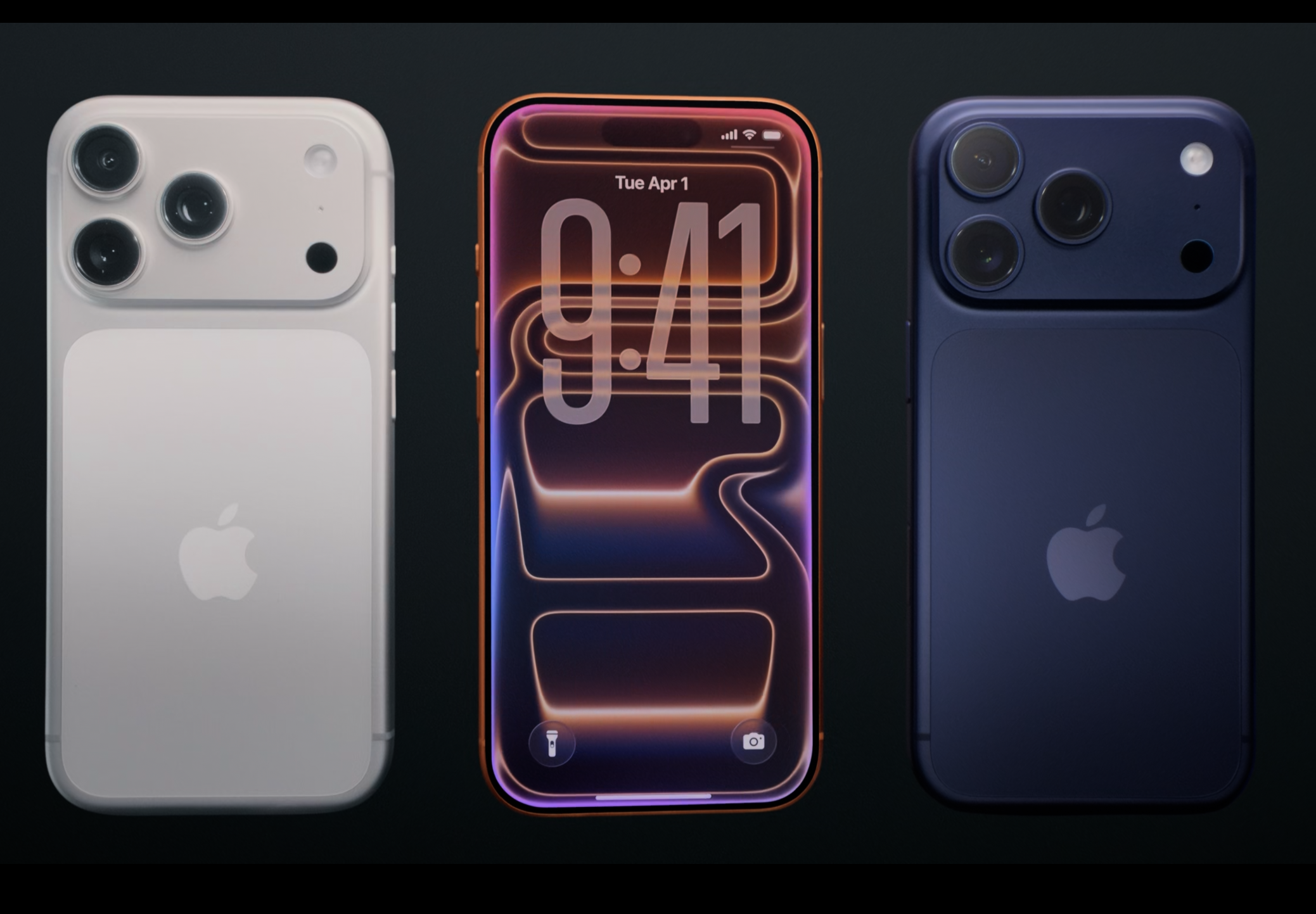
Apple’s flagship phone is also the tech giant’s most powerful one yet. That’s not really a surprise as they continue to pack more Apple Silicon chips into them but now, with the inclusion of a vapor chamber, the reversion back to aluminum for better heat management and the additional GPU core, there’s seemingly no task too big for the professionally-minded iPhone 17 Pro.
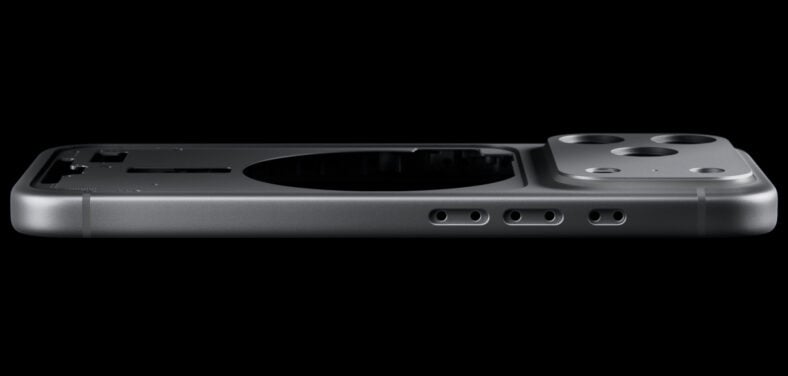
Given it is meant to handle heavy workloads, especially creative ones, much of the form factor of the iPhone 17 Pro line is in service of heat dispersion. That’s the driving factor behind the choice to revert back to an aluminum chassis from the titanium of the past two years. The iPhone 17 Pro, though still substantial in heft, is noticeably lighter than its titanium predecessors as a result.
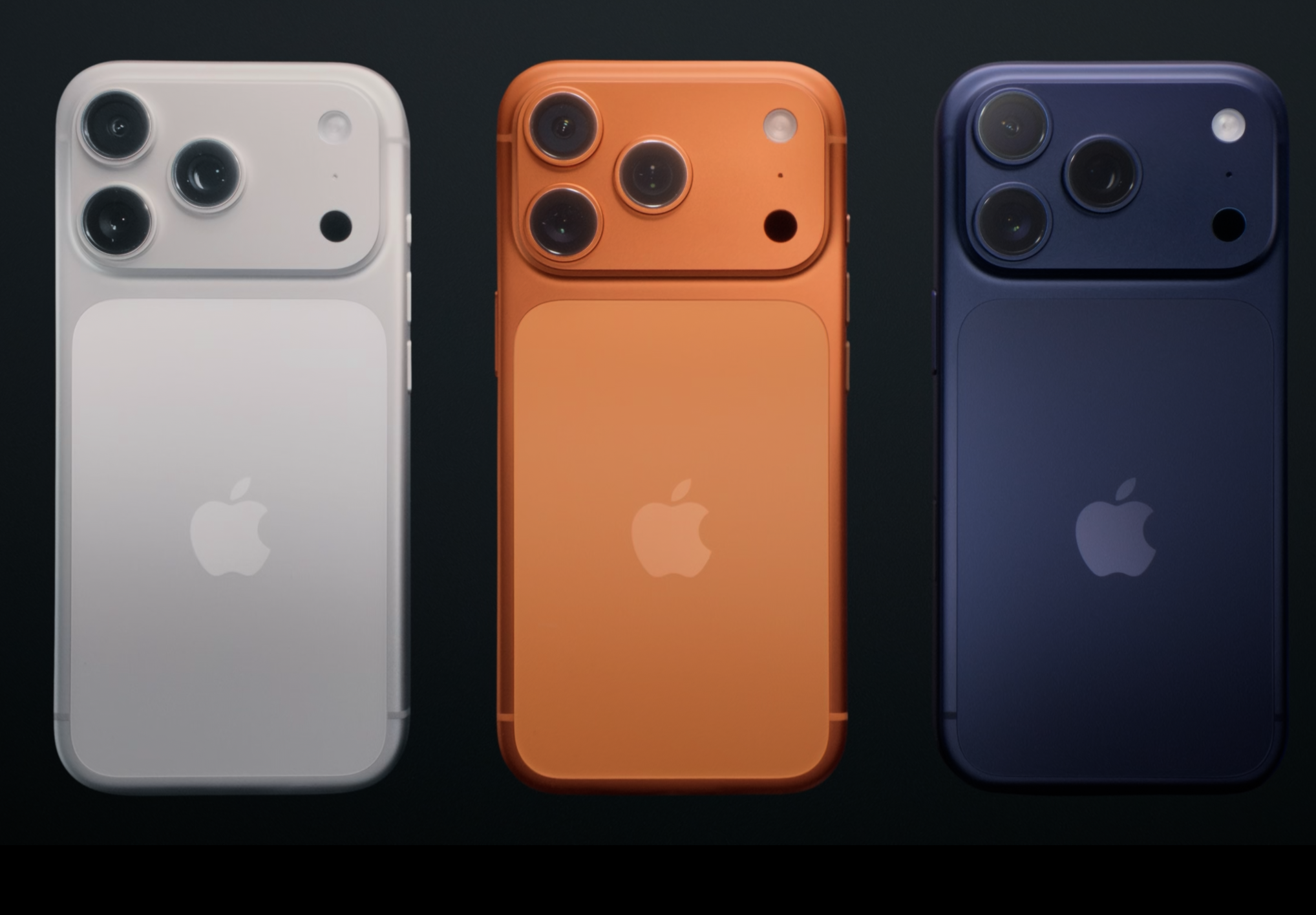
Coupling the material change with the addition of the all new vapor chamber, the iPhone 17 Pros do an admirable job of staying cool no matter how intense a task I throw at it. Even during the initial setup, a time when any iPhone is firing on all cylinders, the 17 Pro Max I tested stayed noticeably cooler than the iPhone Air and last year’s model too.
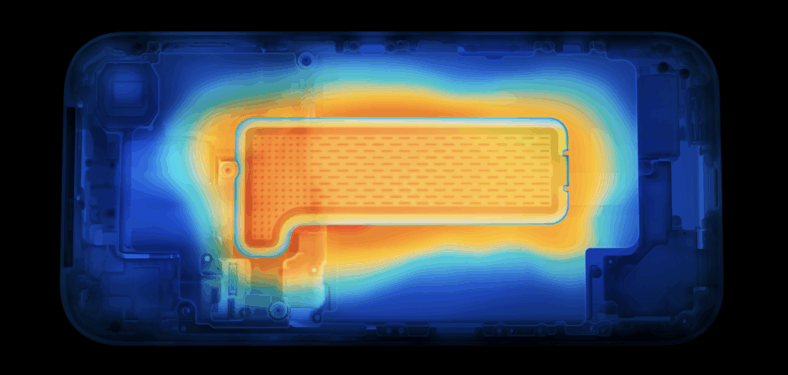
Similarly, the 17 Pro Max handled gaming with barely a blink. Graphics-heavy use was no challenge at all and recording extended 4K video were chewed up and spit out without a hiccup, immediately switching back to any task seamlessly.
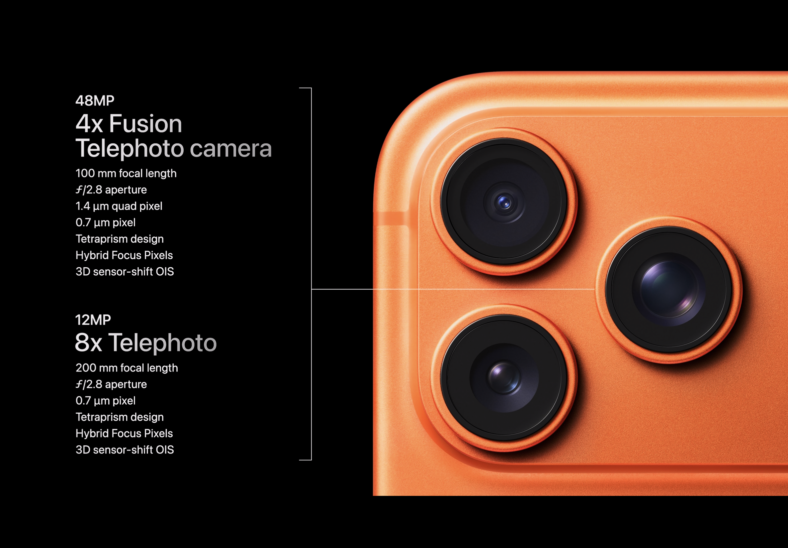
Staying consistent with the recent annual upgrades to the Pro iPhones, the 17 Pro features Apple’s cream of the crop camera array. Not only are all camera sensors now bumped up to 48MP, the telephoto lens gets an upgrade to 8x optical quality zoom, a first in an iPhone, that’s able to maintain incredible detail at a great distance, whether shooting video or still images. With professionals in mind, RAW and ProRes formats, among others, are available to seamlessly integrate footage shot on an iPhone 17 Pro with larger creative workflows.
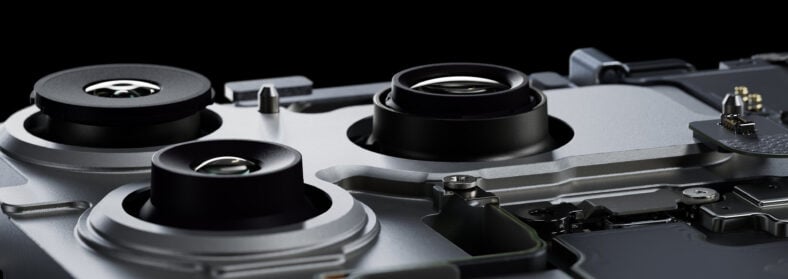
Beyond the vastly versatile outer camera array, the iPhone 17 Pro also features the new Center Stage front-facing camera sensor. It is, perhaps, the biggest advancement I’ve seen to an iPhone camera in several years and allows for neat new tricks like automatic selfie framing and dual (front and rear) video recording simultaneously. Though the 17 Pro line does feature the Center Stage camera, it’s not unique to them and does feature in every new iPhone Apple released this year, so more on that later.

Rounding out the iPhone 17 Pro features are the large Super Retina XDR 120mhz display that are now brighter and feature an anti-glare coating that are legitimately easier to see in direct sunlight. A battery bump thanks to larger batteries packed into the phone and increased efficiencies with iOS26 meant I never went to bed with less than 25% battery left, even during days of heavy use. Speakers are still terrific and sound seems to emanate straight out of the iPhone 17’s screen so viewing videos or playing games don’t even require headphones, though there are lots of good reasons to have them.
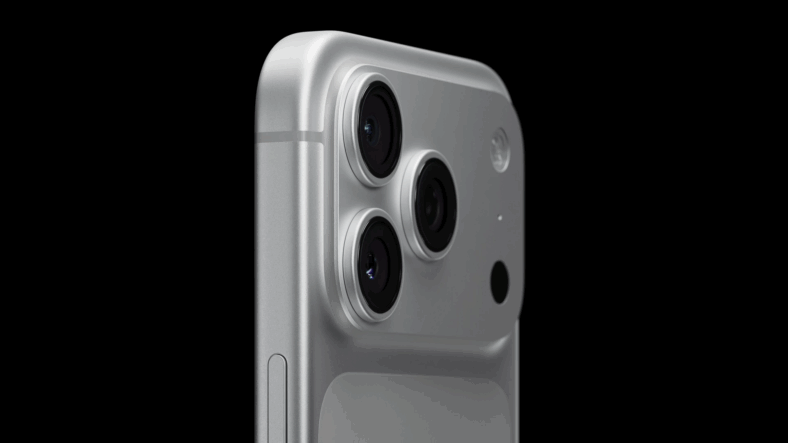
Finally, I can’t say enough about the Cosmic Orange color option. Pro iPhones rarely get anything this fun or instantly recognizable. Where the Classic Silver is, well, classic and the Deep Blue is subtle and understated, the Cosmic Orange (which I’ve heard called the Pumpkin) is flashy, overtly metallic and a huge departure from previous Pro color offerings. We hope this is the first step towards Apple acknowledging that people don’t want to sacrifice personality just to get Pro.

Apple’s iPhone 17 Pro and Pro Max are available now, though ordering one today will likely mean it arrives in a few weeks after a surge of initial pre-orders. All the Pros start with 256GB of internal storage and the Pro Max can actually go up to an enormous 2TB. The base models begin at $1099 for the Pro and $1199 for the larger-screened 17 Pro Max.
iPhone Air
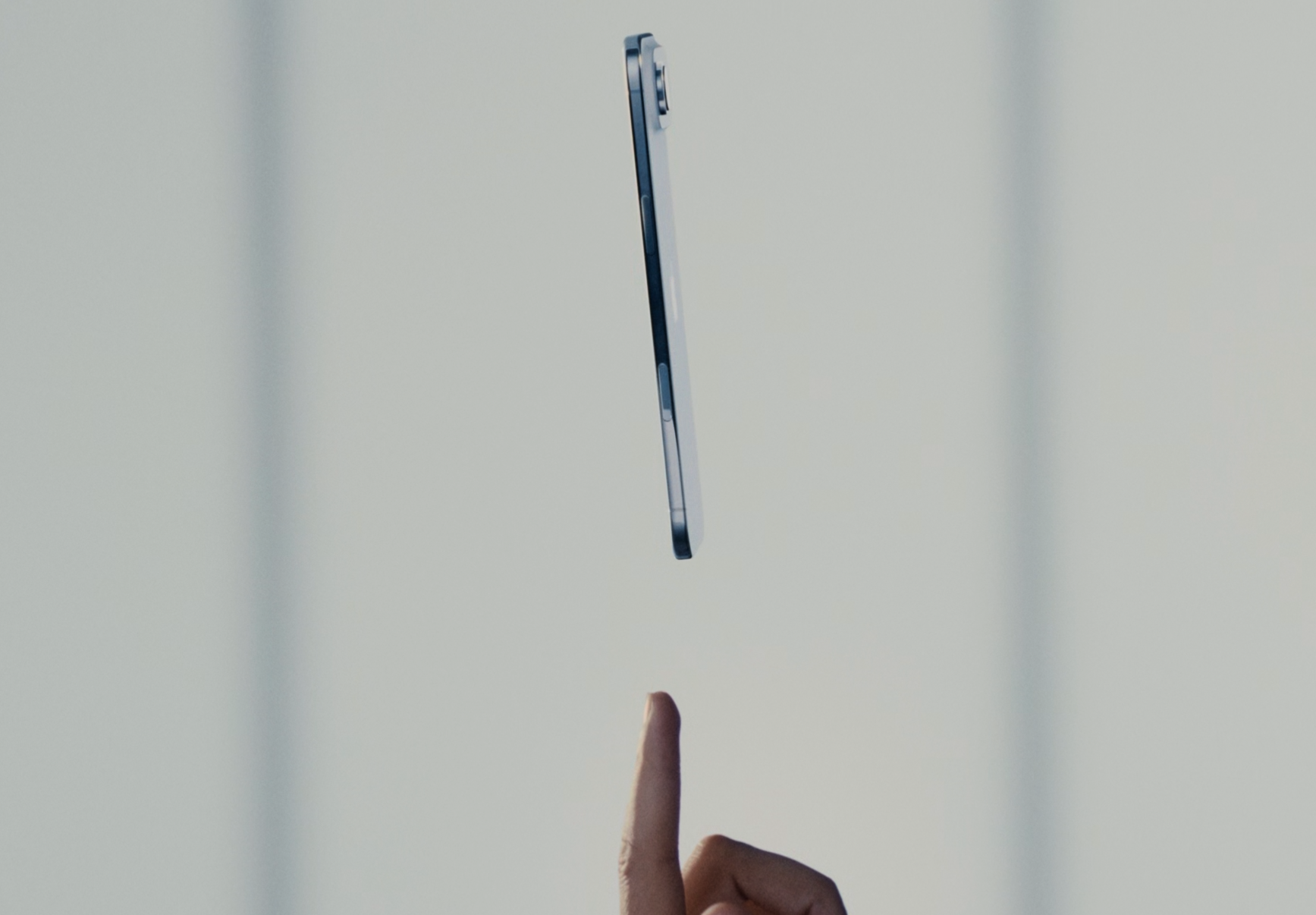
Apple’s ability to make things impressively thin may have waned for a few years but it’s back with the iPhone Air. Every time I let someone hold my review unit, it came with the same response of “ohhhh wow.” The photos and videos don’t do it justice, it needs to be seen in person to be believed. Not only is it thin, it feels weighty and significant in the hand, it’s perfectly balanced, it’s incredibly sturdy and the camera hump, which should disqualify its claims of being only 5.6mm thin just…doesn’t, which is an even bigger testament to its design.
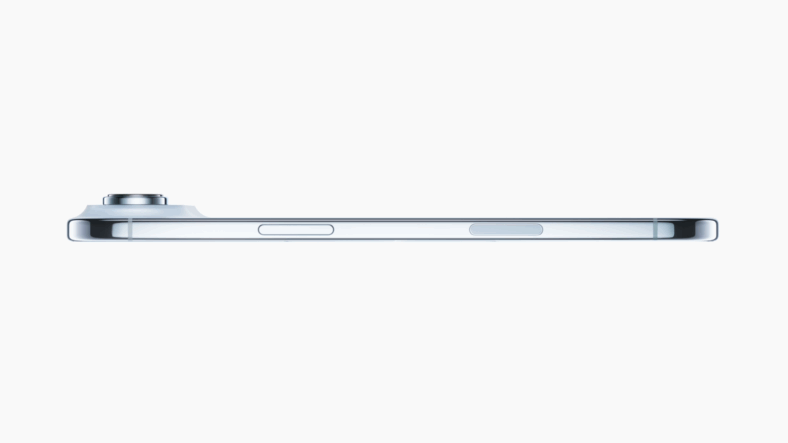
I call it the camera hump but that’s not entirely accurate because the hump at the top of the iPhone Air doesn’t just carry the camera, it houses the A19 Pro Apple Silicon chipset and almost every other component that makes the Air work, besides the batteries. I fully anticipated the hump to disrupt the overall design of the iPhone Air but it ends up being more like a feature, creating a groove below it where my hand naturally sits and adding some stability when my thumb travels around the 6.55” screen which is slightly bigger than the 17 Pro and smaller than the 17 Pro Max. Apple may have stumbled on the perfect size screen as a result of this neither/nor approach.

Because the guts are all up top, my hand also sits below where the phone gets hottest and it can heat up when it’s being put through the paces. Ironically, the activity that got the iPhone Air the hottest (aside from the initial setup) was gaming, which is largely done in landscape where holding the phone in landscape is the norm. It’s a small price to pay though because the iPhone Air handles gaming exceptionally well.

That’s thanks to that A19 Pro chip. Even without the extra GPU of the A19 Pro chip found in the 17 Pros, the Air takes on graphics-heavy games without a hiccup. The chipset makes the iPhone Air feel peppy no matter what it’s doing. App switching is seamless and there’s never a stutter even if streaming video is playing in a PiP. For the average person, there’s very little to be wanted in terms of performance here.
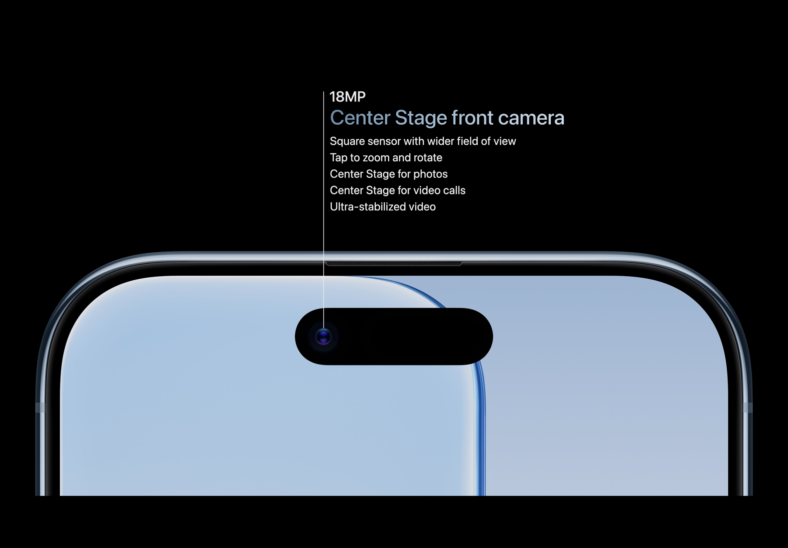
Aside from overall performance, the true test of modern phones comes in the way of cameras. Every iPhone Apple released this year features the aforementioned front-facing Center Stage camera sensor for selfies. Essentially, it’s square sensor that automatically adapts to the selfie I was trying to take, changing aspect ratio automatically for what’s detected in the picture. A solo shot gets a traditional portrait. Add a person and the sensor zooms out to frame the duo properly. Three or more and the sensor switches to landscape without needing me to awkwardly turn my hand. This new feature and its inclusion on all this year’s phones is the best recent example of Apple delivering that old magic that takes something we all do and makes it instantly and easily better so we wonder how we ever did it any other way before.
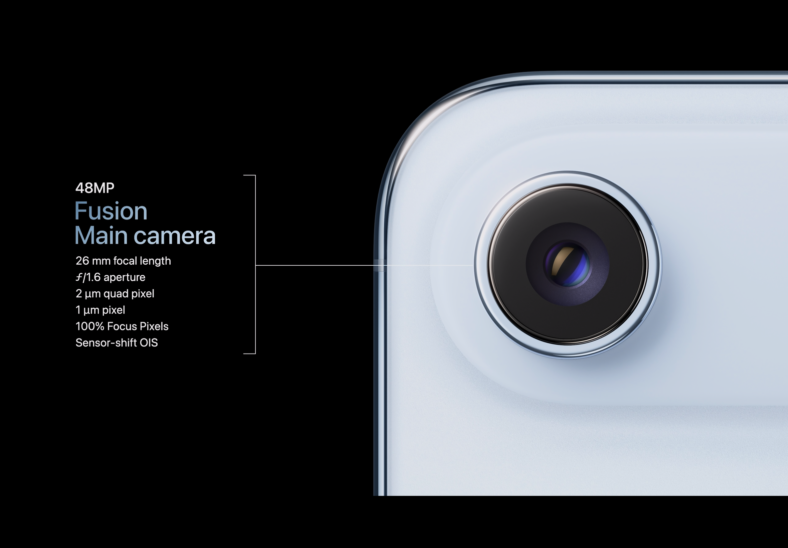
The rear-facing camera, on the other hand, is still a tale of have and have not. While the iPhone 17 Pro’s camera array is the most robust ever, the iPhone Air is forced to do with less in order to preserve its unique form. Instead of a multiple lens array like this year’s other iPhones, the Air gets a single 48MP fusion camera lens that works four times as hard.
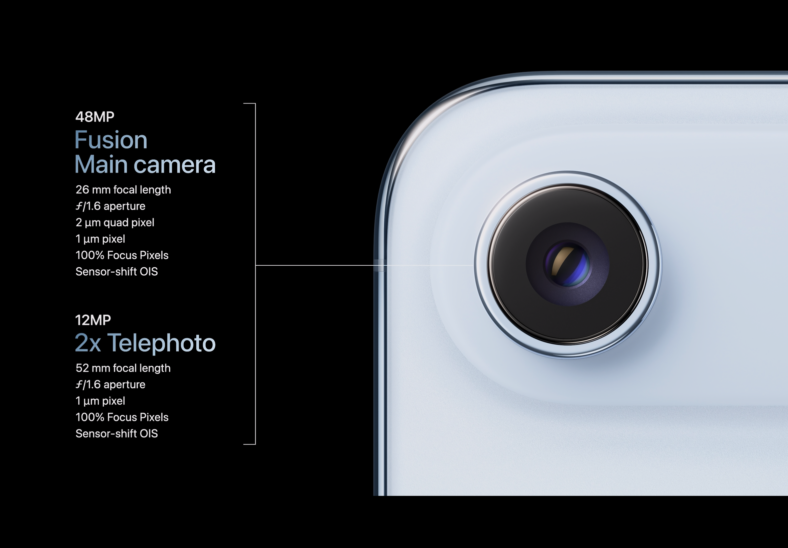
Functionally, that means sacrificing wide-angle and telephoto shooting, two things that might not have been missed even a few years ago but are certain to be a dealbreaker for those like myself who have come to rely on them. Still, the iPhone Air does have terrific optical image stabilization, shoots videos a lot like last year’s Pro and boasts the new front/rear dual recording feature so the trade-off is minor and specific.

Similarly, the iPhone Air also accomplishes its striking form by cutting back on speakers. Specifically, cutting back to a single speaker. For most, that’s a negligible tradeoff; watching TikTok videos doesn’t exactly require surround sound. However, for those who use their iPhone to devour content like TV and movies, it’s something to take into consideration.

Minor sacrifices aside, the iPhone Air is clearly paving the way for the future of Apple’s mobile design language. It wouldn’t be a huge leap in thinking the rumored upcoming foldable iPhone will likely look like two iPhone Airs hinged together and working in tandem. There’s no shame in wanting to be a part of that future right now. The iPhone Air comes in four colors (Sky Blue, Space Black, Cloud White and Light Gold) and the base model starts at $999.
AirPods Pro 3
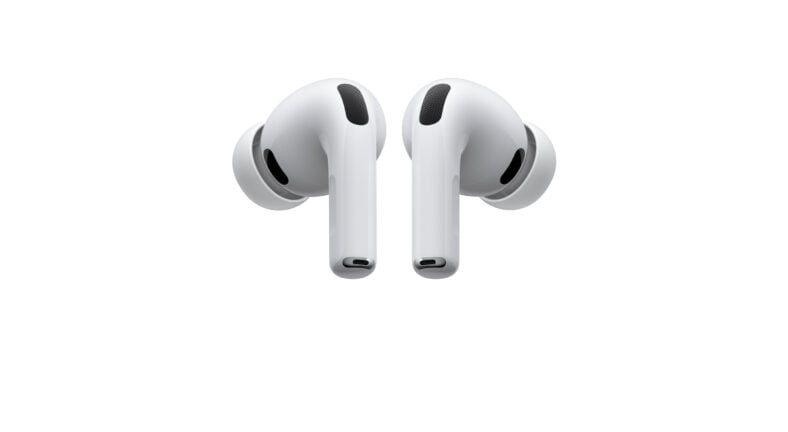
No matter which iPhone I was using, I can confidently say that they’re both better with AirPods. In this case, that specifically means the new AirPods Pro 3 earbuds that Apple also just released. Of all the Apple accessories I’ve tested, there’s no debate that AirPods, with their immediate and easy connectivity, excellent sound quality and top-tier active noise cancelling, are the most important companion to an iPhone. The AirPods Pro 3 take that philosophy and then go much, much further with their capabilities.
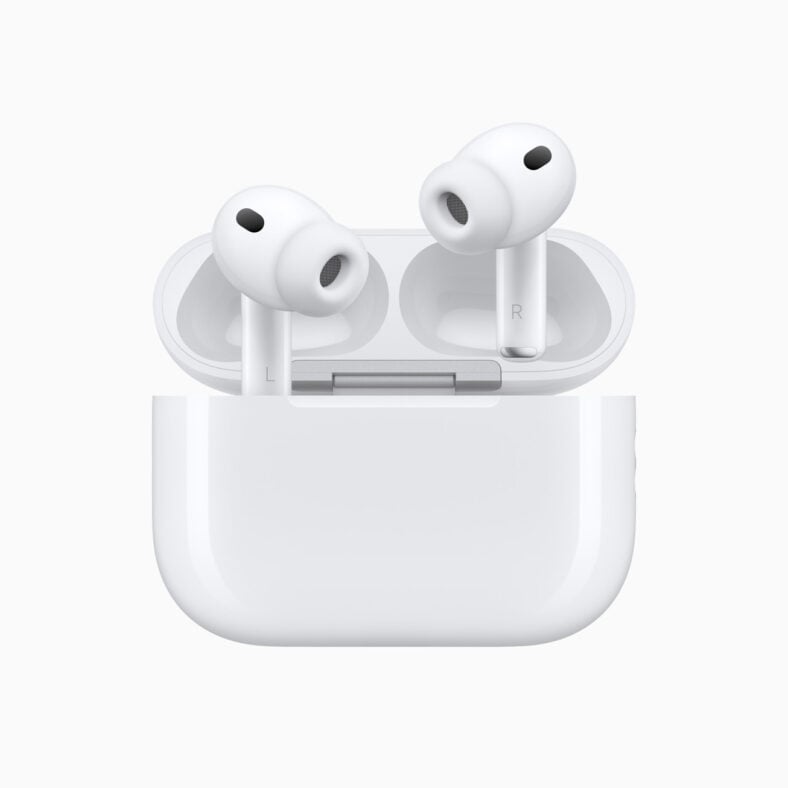
Right off the bat, audio quality is bumped up from their predecessors. I actually made the switch from AirPods Pro 2 and it’s a noticeable increase in clarity, specifically with the Pro 3’s delivering more and clear bass than before. It’s especially noticeable with Spatial Audio tracks in Apple Music but even online video seems to benefit from the upgrade.

Part of that increase in audio quality comes from the better in-ear fit. The AirPods Pro 3 now come with five tip options, up from the previous three, that create an even tighter seal, regardless of the size of the ear it’s in. It’s the combination of these new, more customizable ear-tips and Apple’s actual audio tech that make a noticeable difference in creating active noise cancelling that really blocks out everything from a loud coffee shop to a noisy subway to the rumble of a jet engine. In fact, the ANC is so effective that I found myself choosing the Adaptive noise cancelling over the complete ANC because I found the absolute silence jarring. Obviously that’s not a real problem when the ANC helps focus on dialogue in a movie or blasting tunes.
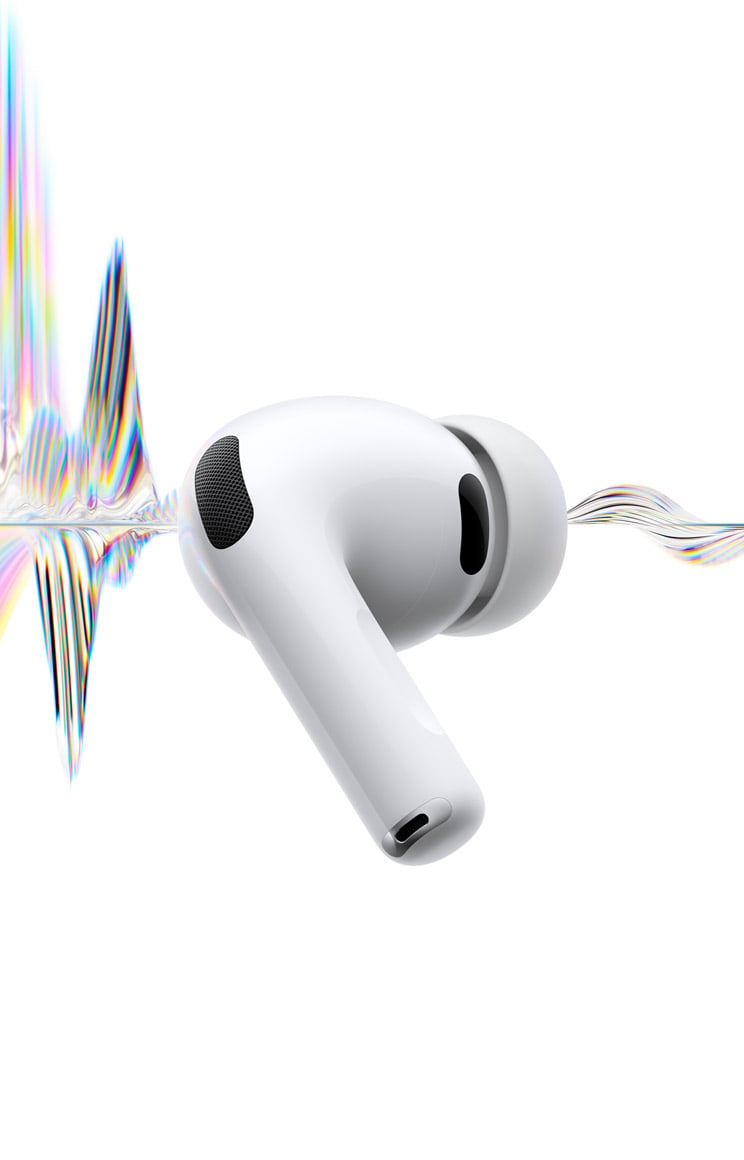
Sound is a priority for any earbuds but, having largely conquered that arena, the AirPods Pro 3 aren’t just about audio anymore. Apple is making strides to round them out as a lifestyle product. It’s not a bad idea considering I carry them with me at all times anyway. Pair them with the Fitness app on iPhone and you’ve basically got a personal trainer in your pocket. The new heart rate monitor is an especially big stride for those who may opt for more collectible watch options than the average Apple Watch. Add a premium Apple Fitness+ subscription and they’ll deliver entire workouts and preset Apple Music playlists. With even better water resistance than before, I can (and do) pour sweat onto them confidently.
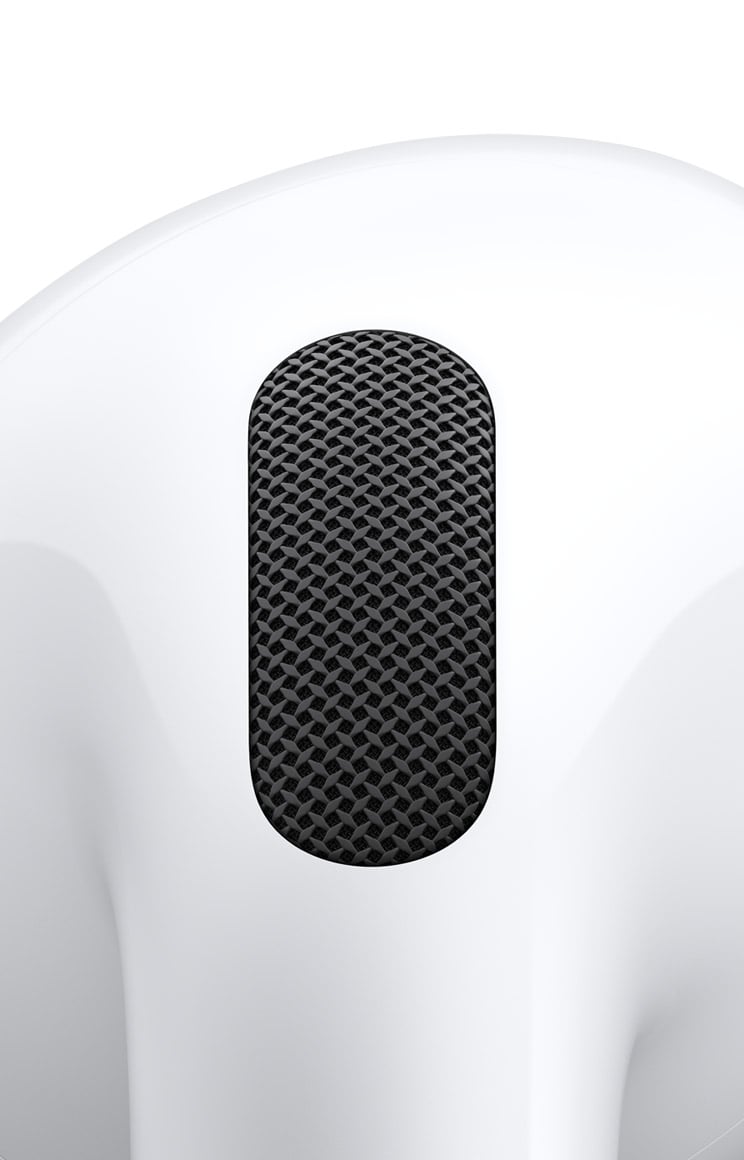
On the other side of the lifestyle front is travel. AirPods have been a travel essential for me for quite some time now but the exciting, Apple Intelligence-powered Live Translation feels like an actual breakthrough. It’s the babelfish from Hitchhiker’s Guide to the Galaxy, realized. through science. Shove AirPods in, pair them with a phone featuring Apple Intelligence, download a language pack and foreign languages automatically turn into English as they’re spoken. Responding will translate back to the other language and display it on your iPhone’s screen. Best yet, it’s a feature that was introduced with the AirPods Pro 3 but, because it relies on Apple Intelligence, it’s also available on the previous AirPods Pro 2 and the regular AirPods 4.

At the end of the day, the AirPods Pro 3 aren’t just earbuds, they’re a must-have companion for any iPhone owner, providing killer audio, smarter workouts and an unprecedented leg up when traveling. At the same $249 as the previous edition, there’s little question that Apple will continue setting the bar for earbuds for the foreseeable future.















